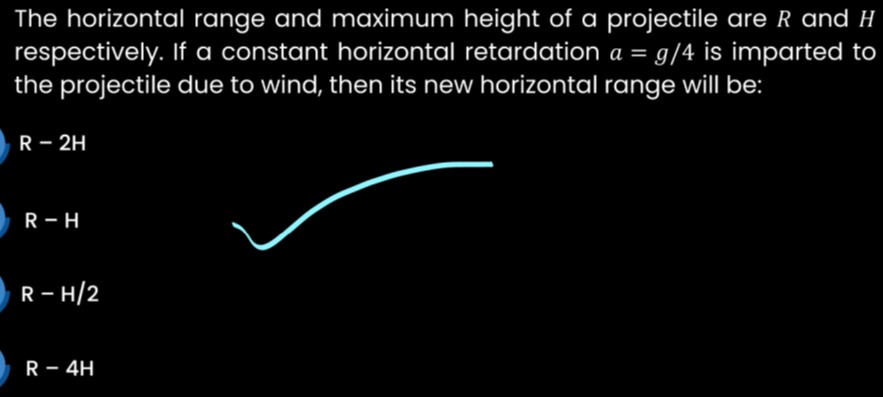Question
Question: The horizontal range and maximum height of a projectile are R and H respectively. If a constant hori...
The horizontal range and maximum height of a projectile are R and H respectively. If a constant horizontal retardation a = g/4 is imparted to the projectile due to wind, then its new horizontal range will be:

A
R - 2H
B
R - H
C
R - H/2
D
R - 4H
Answer
R - H
Explanation
Solution
The time of flight (T) is determined by the vertical motion and remains unchanged. The original horizontal range is R=v0xT. The maximum height is H=2gv0y2. A constant horizontal retardation a=g/4 means the horizontal acceleration ax=−g/4. The new horizontal range R′ is given by R′=v0xT+21axT2. Substituting ax=−g/4, we get R′=R−21(4g)T2=R−8gT2. Using T=g2v0y, we find 8gT2=8g(g24v0y2)=2gv0y2. Since H=2gv0y2, we have 8gT2=H. Therefore, R′=R−H.
